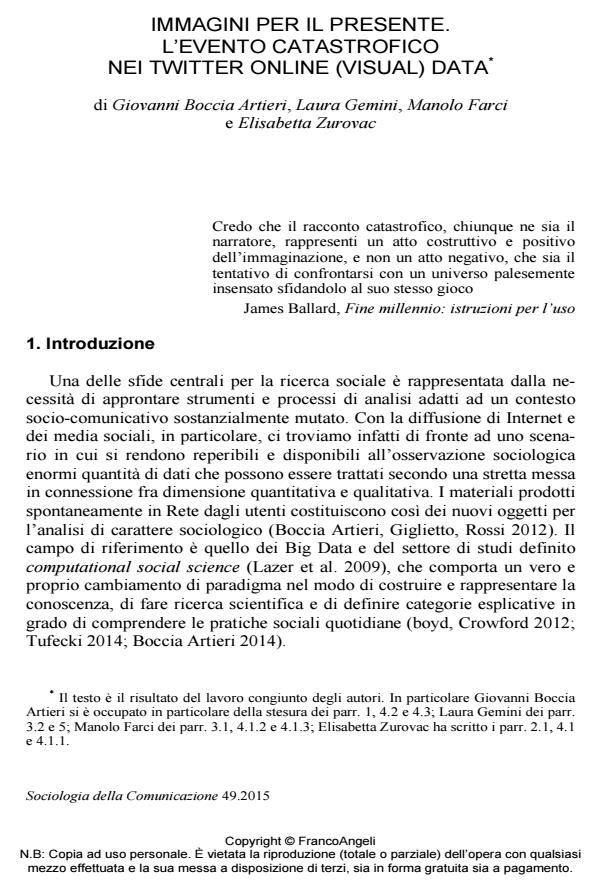Images for the present. The catastrophical event’s Twitter (visual) data
Journal title SOCIOLOGIA DELLA COMUNICAZIONE
Author/s Giovanni Boccia Artieri, Laura Gemini, Manolo Farci, Elisabetta Zurovac
Publishing Year 2015 Issue 2015/49
Language Italian Pages 28 P. 55-82 File size 437 KB
DOI 10.3280/SC2015-049005
DOI is like a bar code for intellectual property: to have more infomation
click here
Below, you can see the article first page
If you want to buy this article in PDF format, you can do it, following the instructions to buy download credits

FrancoAngeli is member of Publishers International Linking Association, Inc (PILA), a not-for-profit association which run the CrossRef service enabling links to and from online scholarly content.
The aim of this research is to analyze visual communicative practices that have taken place on Twitter during the earthquake in Emilia Romagna, Lombardia and Veneto on the 20th May 2012. Coding a dataset of 4256 images that spread the first day of earthquake, the work has reached these major findings: 1. Twitter had both and informative and relational function, 2. users on Twitter produced a narration of the trumatical event oriented to the present, contributing to the reestablishment of a symbolic field during a traumatic event such as an earthquake.
Keywords: Big data, visual studies, Twitter, earthquake.
Giovanni Boccia Artieri, Laura Gemini, Manolo Farci, Elisabetta Zurovac, Immagini per il presente. L’evento catastrofico nei Twitter online (visual) data in "SOCIOLOGIA DELLA COMUNICAZIONE " 49/2015, pp 55-82, DOI: 10.3280/SC2015-049005